The Curly Girl Method: The Transition Period
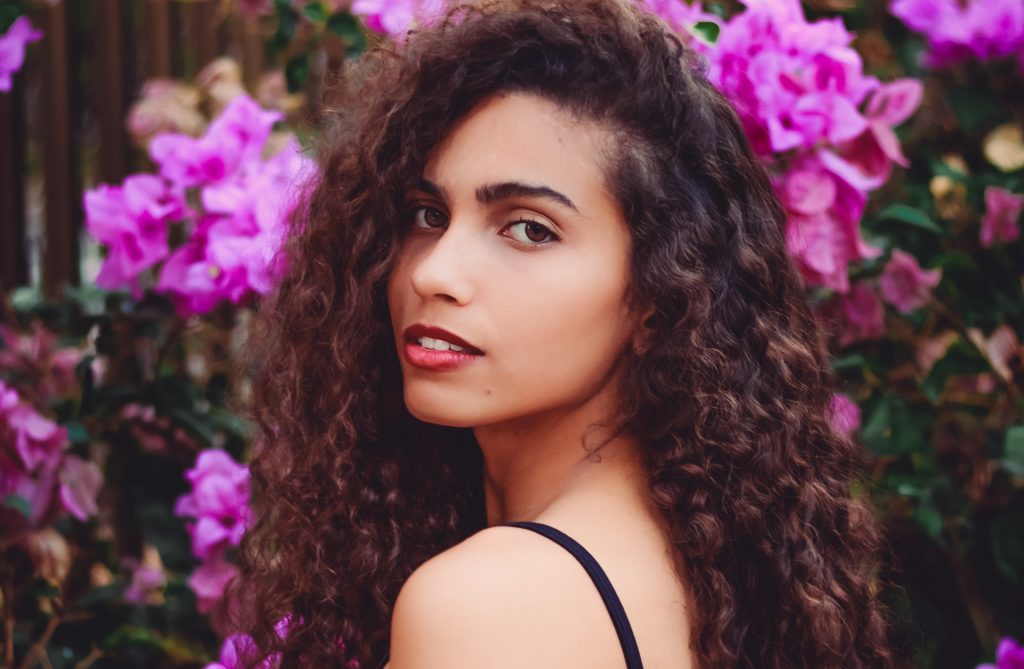
In my experience, one of the biggest hesitations people have for starting the Curly Girl Method is the Transition period.
This is the first 3-4 weeks of the Curly Girl Method when your hair will likely look worse before it looks better.
It may be really oily or curl in a way that’s awkward and unkempt looking.
It may also be frizzier than you’d like–figuring out the right products and amount of products can take some trial and error.
But if you ask me, getting to the other side of the transition period is absolutely worth it.
Today, we’re going to talk about what to expect when your hair transitions, some tips to navigate it, and I’ll share my transition experience.
Side note: This page does contain affiliate links, which means if you purchase something using the product links on this page, I may get a small commission. This comes at no extra cost to you and helps keep this site running. Thank you!
What to expect
Oily hair and scalp
Most shampoos on the market have sulfates in them, which strip hair of the naturally produced oils that curly hair benefits from. These oils naturally moisturize curly hair, which helps it look its best.
According to my research, if you’ve been using a sulfate shampoo and regularly stripping your hair or these oils, your scalp has likely been working overtime to produce the oils your hair needs.
As a result, when you switch to co-washing or a sulfate-free shampoo, it may take your scalp some time to recognize that it doesn’t need to produce as much oil and recalibrate.
This is what may make your hair a little extra oily and/or dirty looking for the first few weeks. Once your scalp adjusts to your new regime, it will produce less oil and coat your hair in a way that makes it look healthy, not dirty.
Awkward curl
If you’ve been straitening or heat styling your hair in a way that manipulates your hair’s natural curl, it may take your hair some time to find it’s way back to its natural state.
As a result, you may find that you have some half-curls or some strands that have weird and unflattering kinks.
Luckily, the more you condition and scrunch your hair (which is discussed in my hair routine post) the more your hair will remember it’s curl pattern, but it may take some time for your hair to find its natural shape.
Frizzy hair
Ultimately, the Curly Girl Method should significantly reduce the frizz you experience.
Frizz is caused when curly hair doesn’t have enough moisture. Most people haven’t been giving their hair enough moisture prior to starting the Curly Girl Method, so it can take some time to get the hair conditioned enough to cut down on frizz.
It can also take some trial and error to find the right products and product amounts that will moisturize and lock in moisture without weighing the hair down.
Another element that reduces frizz is the natural oils we talked about. However, it can take some time for those oils to work their way down the hair shaft, which means in the meantime, you may experience more frizz that you will down the line.
How to navigate the transition
Ease into reduced washing/co-washing
Instead of diving right into co-washing or only washing once or twice a week, ease into a new wash/co-wash routine.
First, maintain your old wash schedule, but use a sulfate-free shampoo instead of your old sulfate one. (My favorite starter shampoo is Cantu’s Cleansing Cream Shampoo) Then, after a couple of weeks, cut back to washing every other day, and co-washing on the opposite days.
Continue to gradually cut back on washing and co-washing until you reach a schedule that works for your hair.
This may mean your transition period lasts a little longer, but your hair will likely look more presentable during the entire process.
Cheat a little
This tip comes from Curly Susie on YouTube. If you have some sections or strands that just aren’t curling well, and you feel like it looks really awkward, consider cheating a little and using a curling iron.
Now, of course, a massive part of the Curly Girl Method is avoiding heat, so you don’t want to go crazy here.
Ideally, you just want to take those few strands that are sticking out at odd angles. It’s also best if you limit the heat to the very end of your hair.
The goal here would be to curl just enough so that the hair falls in with the rest of your curls, but stay close enough to the bottom of your hair so you can chop that heat damage off the next time you get your hair cut.
You aren’t necessarily going for a good curl here, you’re going for presentable.
Pull the canopy up
The top or canopy of your hair takes the brunt of your lifestyle.
It’s the most exposed to the elements, pillowcases, and your hands. All of those things pull moisture out of your hair, which can lead to a frizzier, more damaged, and unappealing top layer.
If you find the top of your hair isn’t looking that great, but the bottom and underside of your hair is looking okay, gather that top layer and use a claw clip to pull back that section only.
Pull it all up
If your entire hair isn’t looking so hot, consider wearing it up for most of your transition.
Loosely pile your hair on top of your head in either a pineapple or a loose bun (both are discussed in the How to Sleep with Curly Hair post).
This will hide the most unpresentable parts of your hair in a way that won’t damage your curls any further.
Hat or scarf
You can also resort to covering your hair completely with either a hat or a scarf during your transition.
However, it’s a good idea to use a scarf or hat lined with satin or microfiber. Cotton or other similar materials can pull moisture out of the hair, which may add to frizz and extend your transition time.

My Experience
The transition period was absolutely the reason I was most hesitant to start the Curly Girl Method. But in the end, my transition was pretty painless.
I have a dry scalp, which has its own set of problems but turned out to work in my favor during the transition period. My hair did get slightly more oily than usual, but it never looked or felt dirty. It just seemed to make my hair a little darker than usual.
I also followed one of the tips above and eased out of sulfate shampoos by first switching to a sulfate-free one and gradually cutting back my washes.
Since I was never one to blow-dry and I stopped heat styling my hair long before I started the Curly Girl Method, my curl pattern came back pretty quickly and I didn’t find that I had any awkward curls or any need to use a curling iron.
I definitely had some frizzy days as I played around with products but as a whole, my hair was less frizzy than I was expecting it to be, and I found pulling my hair half up made the bad days manageable.
Of course, my experience was based on my personal hair and scalp situation, but if the transition period is what’s holding you back, I say give it a shot.
If you can stick it out, you may be so happy with the results that you’ll wish you started sooner.
And if you do end up really hating the process, you can always back out or try to modify it in a way that works for you.

Looking for more guidance on your curly hair journey?
For beginners
If you’re new to curly hair care and looking for some help, you should check out the No-Stress Guide to Curly Hair Care!
After spending two years learning and caring for my curly hair, I wanted to create my own, in-depth guide to help fellow curlies create incredible curls in the easiest way possible.
It took me a while, but I eventually found an approach that helped me create a curly hair routine that fits into my life in the simplest way possible. And now I want to help you do the same!

For more intermediate/advanced guidance
If you’ve been on your curly hair journey for a while but still have some struggles, check out Curly Hair Problems!
After spending hours scouring the internet looking for solutions to my own curly hair problems, I found myself wishing for an easier, more comprehensive guide to the most common problems.
So that’s what I created!
Curly Hair Problems offers you 78 total solutions to the five most common curly hair care problems, including frizz, curl clumps, limp curls, product issues, and scalp issues.

Sound off: What’s helped you get through the Curly Girl Method Transition period? What’s been your biggest concern? Tell us about it in the comments, and make sure to tell us about your hair type.
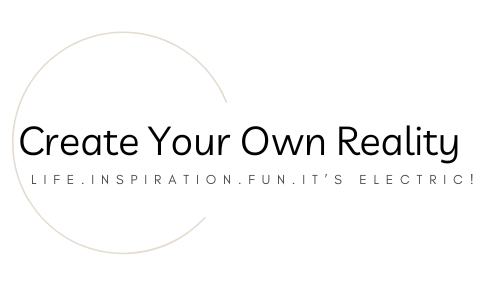
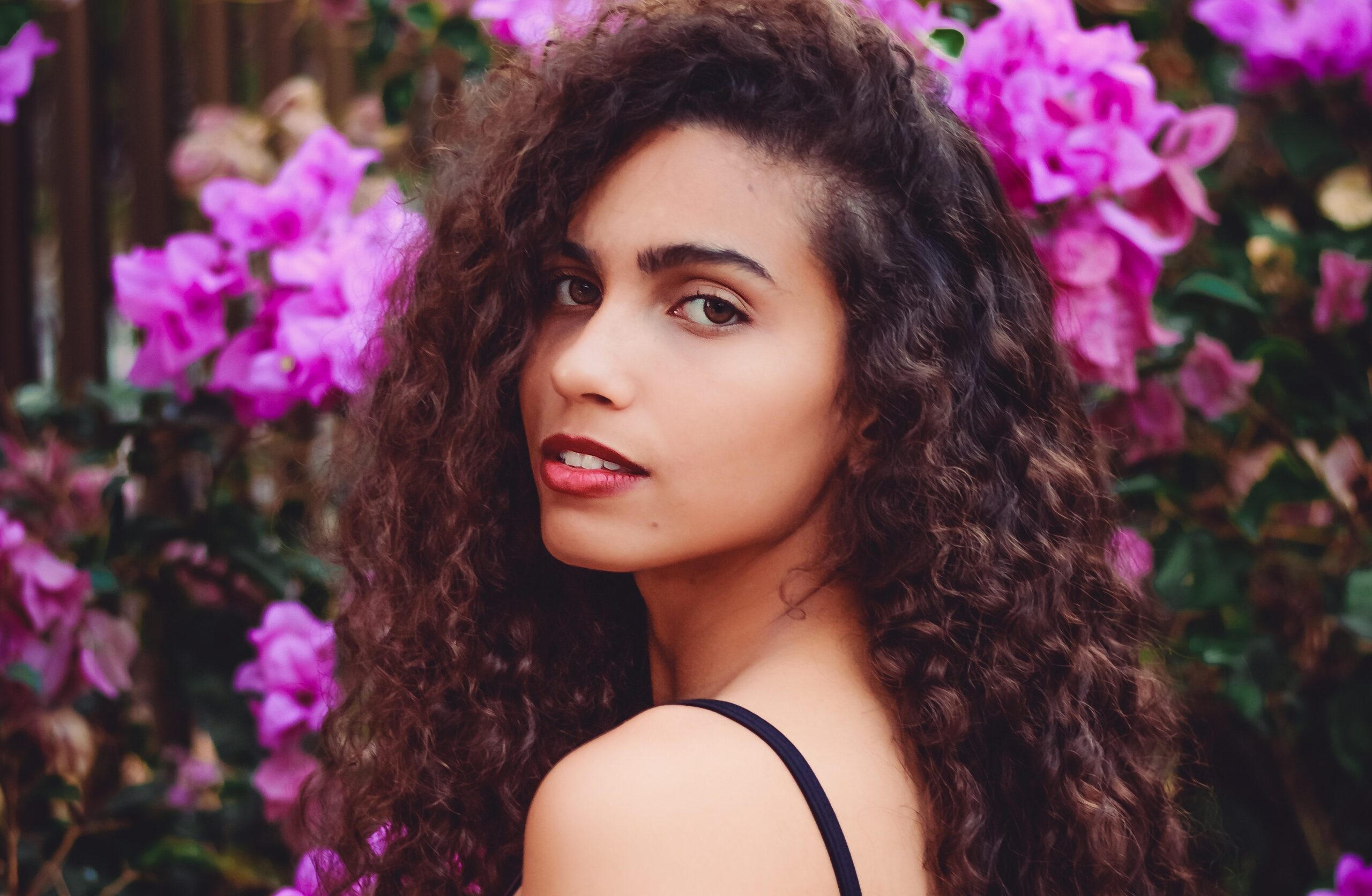

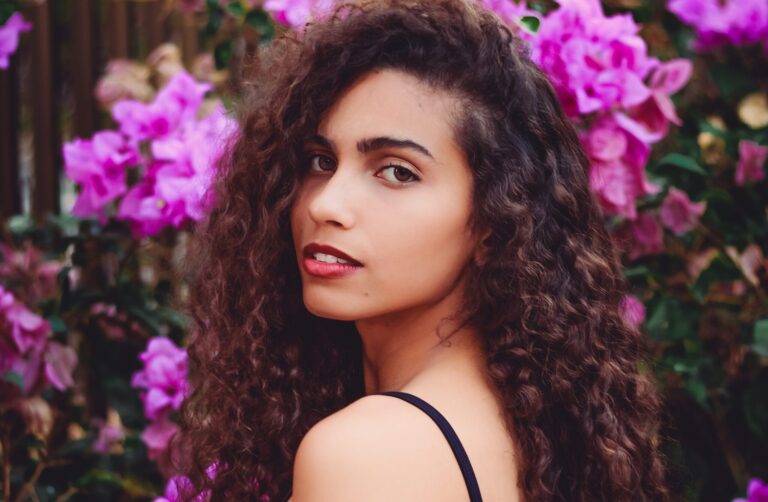
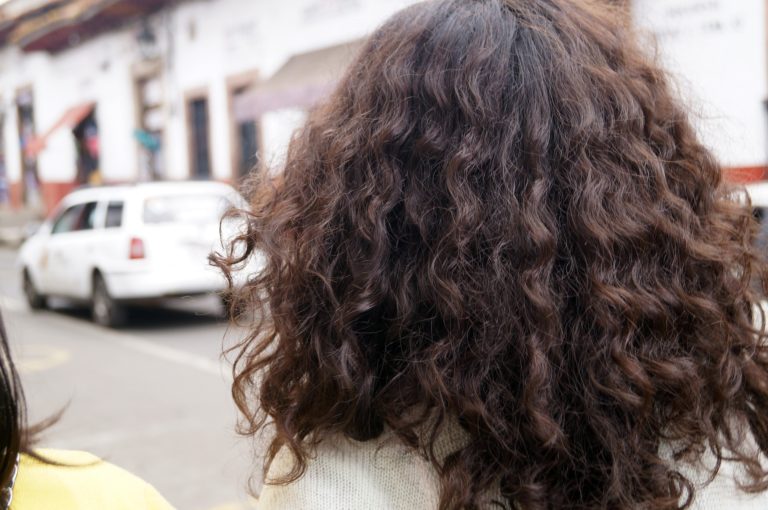
I wash my hair twice a week. I use a leave in , curl cream mixed with gel, and a mousse. I have tried using an oil and i get frizzy. Since i havebeen doing the curly girl method, my curls are better, but im still getting frizzy. After diffusing and letting my hair air dry tge rest of the way, it looks ok at first. An hour ir two later, it’s frizzy. Im so frustrated. And i try different things and no matter, im still frizzy. Help!
Here’s a post with some suggestions you can try that might help with frizz control. Typically, frizz is a sign of dry hair. If you’re newer to the curly girl method, it’s possible that you’re hair is drier than you realize and you might just need to use A LOT of conditioner when you wash and use A LOT of leave in conditioner and gel when you style. (This is what I had to do). If that’s the case, keep hydrating your hair and it should get better with time. It’s also possible that you haven’t found the right gel/products for your hair. The transition period is without question the hardest part. It may take a lot trial and error to figure out what works best for your hair. I hope this helps some! Good luck!
Hi!
I just started the CG method but my hair looks even frizzier then before. I have high porosity, low elasticity 2c/3a hair. I started to use protein free products. Is this normal for it to get frizzy? Or should I add heavier protein products? It is so confusing!
Typically frizz is a sign that you need more moisture, so you might want to try deep conditioning a couple times week and using a more conditioner and gel. If you’re not using a leave in or a cream when you style, you may want to try that too (but try to change one thing at a time so you know what works and what doesn’t). I found in the beginning I needed a lot of leave in conditioner in my hair. It took a long time to dry, but I couldn’t argue with the results. As my hair got healthier, I needed less. I hope this helps some!
Frizz is a sign that you need more moisture but also a sign that you may need more protein. This is especially true with high porosity hair. My hair loves protein and if I don’t use products with protein and don’t use a protein treatment pretty regularly my hair gets frizzy and my curls are not defined elongated and barely holds a curl even though I have 3a curls. I would watch Swavy Curly Courtney on youtube she has high porosity hair and is very helpful and has great videos on moisture/protein balance. Not everyone needs so much moisture in their hair.
How long should I stick with one product before switching and trying something new? I am in my first week of the method and loving it so far.
Yay! I’m glad you’re loving the curly girl method! Ultimately, it’s your call. I typically give a product 2-4 applications and often try a few different techniques and product amount. I hope this helps! 🙂
I’m in the transition period at the moment, I’ve switched my shampoo, but am still washing every other day as my scalp is over producing oil. I find that the sulfate free shampoo isn’t cutting through it, I get out of the shower and my scalp still feels oily – I’m also getting some pimples/ blocked oil ducts in the particularly oily part, any advice? I’ve stopped brushing my hair too, so I’m not sure if it just needs a good brush to help distribute it through a bit or just do a one off shampoo with my old shampoo and start again?
It’s possible you just have a more oily scalp and it’ll take some time to calm down. If it’s really bad, you may want to try washing every day with the sulfate free shampoo and then ease back to every other day. If you want to try a comb or a wet brush in the shower, it may help the oils spread–I don’t have direct experience, but it can’t hurt to try. Just make sure it’s in the shower while your hair is wet and full of conditioner. You may want to try a scalp massage brush or exfoliator to help with the blocked ducts. (I talk about them a little in my Dry Scalp Post.) If you want to get through the transition period, I would suggest avoiding the old shampoo. Again, I don’t have experience with this, but to me, that seems more likely to reset everything and you’ll likely find yourself in a similar position in a week or so. I hope this helps some! I know some transitions can be rough, but if you can get through it, you’ll likely be happy you stuck it out!